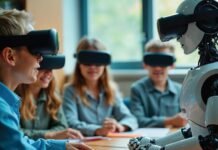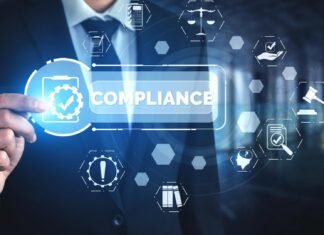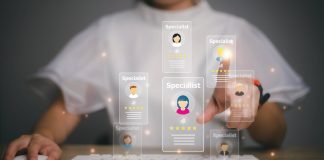What is really engaging now? And it is not just paychecks or perks, but it is purpose. The workforce, Gen Z in particular, and also the upcoming Gen Alpha, requires a kind of work and recognition beyond the annual review. Companies that do not live up to this expectation are faced with retention issues, and those that integrate purpose into day-to-day experiences have been reported to be more resilient and loyal.
It is already changing in boardrooms. The budgets on learning and development are increasing as executives are looking at continuous learning as a source of workforce resilience and long-term success. Engagement is not a soft metric anymore but a competitive differentiator.
Rethink the Learning Experience
The outdated training once-a-year model is outdated. The employees desire a dynamic, interactive, and personalized learning experience. Microlearning courses provide fast skills upgrades. Gamification makes the motivation alive. AR and VR are no longer considered experimental technologies; they have become mainstream strategies that enhance knowledge retention and teamwork.
Customization is the most important. AI-enabled platforms develop dynamic routes that reduce content wastage and provide what people require upon demand. It not only increases completion rates but also results in a workforce that feels invested in through redesigning the learning experience based on immersion and personalization. The productivity and engagement gains are measurable in companies that redesign their learning experience around immersion and personalization.
Bridge the Skill Gap with Data and AI
The skill gap remains a pressing challenge. A recent study shows that more than half of L&D leaders still struggle to close it fast enough. Slow AI adoption compounds the issue. The question is not whether companies recognize the gap—it is whether they are willing to act at speed.
The tools exist. AI-powered platforms generate personalized learning paths. Predictive analytics identifies emerging skill needs before they create bottlenecks. HR dashboards now highlight not only who is underperforming but also who is under-skilled and ready for targeted upskilling. Organizations using these tools see internal promotion rates climb and turnover decrease.
The strategic play is clear: data-driven engagement transforms skills into a competitive advantage.
Humanize Leadership for Real Engagement
How do you keep talent at hand when your rivals pay more? Trust. Trust is the money of leadership in 2025. Employees who have confidence in their managers tend to remain longer, work more, and interact more.
Leaders are reacting by moving away from the command-and-control to coach-and-guide. Feedback loops are used instead of yearly reviews. Open communication and intention-driven culture reign in boardrooms. The recognition is not top-down anymore, but within peer networks and within team interactions.
Humanizing leadership (via coaching, transparency, and recognition) by executives creates the pace of engagement that cannot be fostered by compensation alone.
Reinvent the Talent Pipeline
Traditional hiring models are under pressure. Companies are rethinking pipelines with internships, job rotations, and skill-first hiring. Internship programs already show adoption rates above 60%, with success measured not only by candidate quality but also by their readiness to align with culture.
Job rotation, though less common, is highly effective in cultivating multi-skilled leaders. And the most profound shift: skill-based hiring is overtaking credential-based approaches. Degrees are losing weight, while proven capabilities in AI, digital fluency, and sustainability are gaining currency.
For the C-suite, this means building pipelines around agility, not credentials. Experience and adaptability must outrank static qualifications.
Generative AI Meets Career-Driven Learning
Generative AI is taking a new shape in the alignment of learning and career development. Recent research on thousands of students demonstrates that AI-selected, career-oriented learning content has a notable positive effect on satisfaction and engagement. Students do not have to go through irrelevant modules; learners are directed to the training that is actually helpful to their objectives.
There are more implications. With the further adoption of AI in the processes, the workplace preparedness will rely on the AI aptitude. Governments, universities, and corporations have already joined hands to see that employees of all levels can interact with AI in a responsible and efficient way.
Investors in current AI-powered personalisation and workforce AI literacy initiatives can create organisations that are more adaptable in the future.
Practical Moves for the C-Suite
To convert insights into action takes bold but realistic actions. Five priorities that executives can begin with are:
- Audit knowledge to identify gaps and needs for the future.
- Gamification and pilot microlearning to develop business-critical options.
- Provide data dashboards to equip managers with data to identify disengagement.
- Make high-impact positions investment opportunities in immersive learning and GenAI personalization.
- Remodel pipelines using internships, rotations, and skill-based recruitment.
The success should be evaluated in two dimensions: employee engagement indicators like their participation and satisfaction, and business performance variables like retention, internal mobility, and growth in productivity. Engagement is good; engagement related to business performance is transformational.
Future-Forward Reflection
So what would happen should we reshape workforce success not as an endpoint but a living ecosystem? The intersections are engagement, purpose, skills, and leadership that form resilience. Organizations that adopt this dynamic model stand in a better position to cope with uncertainty, technological disruption, and competition at the international level.
Talent strategies will be redefined by 2026 with AI learning assistants, immersive peer-to-peer sites, and hyper-personalization of the onboarding. The companies that will take action today will not just be at the same pace; they will be the pace setters.
Management of people in the future will not be about managing people, but it is about engaging them in a manner that learning, talent, and purpose are aligned. The ones that get this balance right will not only survive the future of work. They will own it.
Explore HRtech News for the Latest Tech Trends in Human Resources Technology












